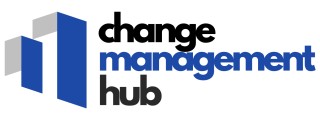-large-teaser.webp)
Understanding Six Sigma in Call Centers
Grasping the Concept of Six Sigma in Call Centers
Understanding sigma in call centers is pivotal for enhancing service quality and customer satisfaction. Six Sigma, a methodology with roots in manufacturing, aims to streamline operations by minimizing defects and variations in processes. But how does it relate to a call center setting? Six Sigma in call centers focuses on achieving operational excellence by using data-driven approaches to improve performance. The methodology involves several levels of proficiency, often referred to as belts: yellow belt, green belt, black belt, and master black belt. These belts signify the depth of sigma training one has undergone, each bringing different expertise levels to the table. Lean Sigma principles emphasize removing waste and optimizing time management, thus ensuring efficient call center service delivery while meeting customer expectations. The process begins with sigma certification, which certifies individuals in data analysis, problem-solving, and quality enhancement. To truly leverage Six Sigma, call center teams undergo belt training to enhance their ability to resolve customer calls effectively, ultimately aiming for superior call resolution rates. This isn't just about understanding sigma but about integrating it within daily center operations for continuous improvement in service quality. For those keen on integrating Six Sigma within their call centers and learning more about optimizing performance, explore this comprehensive guide to further insights. This understanding lays the foundation for identifying operational challenges and implementing effective strategies within your call center.Identifying Challenges in Call Center Operations
Unveiling Operational Challenges in Call Centers
In the fast-paced environment of call centers, maintaining high service quality while meeting customer expectations is no small feat. Numerous challenges often arise that can impact the overall efficiency and performance of call center operations. Identifying these challenges is the first essential step in implementing effective solutions like Six Sigma methodologies.- Data Overload: Call centers handle vast amounts of data every day, from call logs to customer feedback. Without a proper data-driven strategy, managing this data becomes cumbersome, hindering quick decision-making and continuous improvement efforts.
- Customer Service Quality: Ensuring consistent customer satisfaction and call resolution within minimal time is crucial. Service quality issues often arise due to untrained staff, lack of proper monitoring, and inconsistent handling of customer queries.
- High Staff Turnover: It's no secret that call centers have one of the highest employee turnover rates. This often stems from inadequate training programs, such as Yellow Belt and Green Belt training, which leave staff unprepared to handle the dynamic nature of call operations.
- Complex Processes: Call centers are laden with multiple processes and performance metrics. Simplifying these through Lean Sigma approaches can streamline operations and enhance customer experience.
- Resistance to Change: Implementing new processes, such as Six Sigma or Lean methodologies, often faces resistance from staff used to traditional ways. Understanding the root causes of this resistance is crucial for successful implementation and achieving black belt certification standards.
Implementing Six Sigma Methodologies
Adopting Effective Methodologies to Elevate Service Quality
To effectively implement Six Sigma methodologies in call centers, it is essential to grasp how these strategies can address intricacies in operations. The primary objective of integrating Six Sigma within a call center environment is to elevate customer satisfaction and service quality, aligning with customer expectations. A data driven approach is at the core of Six Sigma and Lean sigma. To begin with, identifying key performance indicators (KPIs) relevant to customer service and center operations is crucial. These KPIs might include call resolution time, customer satisfaction scores, and service quality metrics. These indicators serve as valuable data points, enabling the call center team to understand sigma benefits in real-time operations.Building a Knowledgeable and Skilled Team
Training is integral when incorporating Six Sigma. Different levels of belt training, such as yellow belt, green belt, and even black belt, equip team members with the necessary skills and knowledge. Individuals with black belt certification provide leadership by analyzing data and orchestrating improvement plans while those with a master black level can span larger organizational changes. For instance, focused sigma training empowers call center agents and support staff to identify and rectify process inefficiencies. Through these combined efforts, the call center aspires toward continuous improvement in customer service, rather than settling for the status quo.Implementing Structured Frameworks and Processes
Upon achieving an understanding sigma through certification, the next phase involves the systematic application of these methodologies. Define critical processes and streamline operations by considering both lean and sigma principles. Careful mapping and measurement ensure that everyone involved can track both successes and areas that need refinement. Ultimately, the true challenge is overcoming resistance to change. Encouraging an openness towards new approaches, as seen in embrace flexibility, showcases the value of Six Sigma to all levels of the organization, reinforcing a commitment to excellence in performance and quality in customer experience.Case Studies: Success Stories
Showcasing Success through Real-Life Implementations
The application of Six Sigma methodologies in call centers has led to remarkable transformations in performance and quality. These success stories demonstrate how structured approaches and data-driven decision making can lead to improved customer satisfaction and operational efficiencies.
In one inspiring example, a call center dealing with high call volumes and long wait times employed Lean Sigma principles to streamline their processes. By doing so, they not only reduced wait times but also enhanced service quality. The team focused on call resolution, analyzing data to pinpoint bottlenecks, subsequently driving significant advancements in customer experience.
Another call center aimed at elevating their service quality adopted Six Sigma belt training principles. With the support of a dedicated black belt professional, the center embarked on a transformation journey. Comprehensive sigma training empowered the staff, resulting in optimized customer interactions. This focused approach directly addressed center-specific challenges, leading to higher customer satisfaction rates.
In addition, a center with a primary focus on tech support integrated a continuous improvement mindset. Through ongoing training and skill enhancement, the center met evolving customer expectations efficiently. These training modules, spanning from yellow belt to master black belt, ensured that team members were adequately equipped to handle complex inquiries while maintaining top-notch service.
These case studies substantiate the immense value of Six Sigma in call centers, highlighting its capacity to foster not only performance improvement but also a culture of ongoing excellence. The understanding of Six Sigma's applicability forms the foundation, with real-world examples acting as a catalyst for organizations aiming to embark on a similar transformation.
Measuring Success and Continuous Improvement
Evaluating the Impact and Continuous Growth
Call centers implementing Six Sigma methodologies must measure the effectiveness of their strategies to ensure enhanced customer experiences and operational efficiency. Objective assessment is pivotal in confirming that the improvements align with customer expectations and business goals. Performance metrics are vital in this evaluation process. By collecting data on key performance indicators (KPIs), such as overall call resolution times and customer satisfaction levels, call centers can identify trends, efficiency gains, and areas needing further improvement. Using a data-driven approach facilitates objective analysis and decision-making, allowing call centers to remain agile in an ever-evolving market. Six Sigma training and the structured use of belts—ranging from Yellow Belt to Master Black Belt—play a key role in defining the expertise within the call center teams. Employees trained in these statistical methodologies can better support service quality enhancements through empirical analysis and problem-solving techniques. Continuous improvement is a fundamental principle that organizations must embrace. Lean sigma principles transform traditional processes through ongoing refinement. This ensures that any implemented change persists and evolves to meet new challenges. Training programs and sigma certification reinforce team readiness to handle shifts in customer needs or operational hurdles. Ultimately, the sustained focus on performance metrics, active data analysis, and targeted training paves the way for lasting improvements. By perpetually assessing their strategies, call centers can maintain a high standard of customer service and ensure that both customer satisfaction and quality are consistently met.Overcoming Resistance to Change
Overcoming Challenges in Six Sigma Adoption
When call centers embark on their Six Sigma journey, resistance to change is often an unavoidable hurdle. Resistance can take many forms, from team members hesitant to embrace new methodologies to management wary of allocating resources towards training and certification. However, addressing and overcoming these challenges is essential to enhance call center efficiency and improve customer service.
Six Sigma initiatives often face resistance due to a lack of understanding and buy-in. Educating the team about what Six Sigma entails—its benefits, principles, and how it aligns with the center's goals—is crucial. It’s important for the leadership to clearly communicate how Lean Sigma methodologies support the call center's performance, including improving call resolution and meeting customer expectations.
Engaging and Empowering the Team
One of the most effective strategies to overcome resistance is organizing comprehensive belt training programs. Offering Yellow Belt, Green Belt, and Black Belt training can empower employees by enhancing their understanding of Six Sigma principles and how these can be applied to improve service quality. This investment in professional development is likely to foster a sense of ownership and responsibility, transforming team members into enthusiastic advocates for change.
Moreover, leveraging data driven insights to showcase early wins can help in turning skeptics into supporters. Presenting concrete examples of improvements in call center operations, supported by robust data analysis, can reinforce the effectiveness of Six Sigma initiatives. As seen in various case studies, when team members observe enhanced customer satisfaction and center operations firsthand, it encourages them to support further Six Sigma efforts.
Acknowledging and Rewarding Contributions
Recognizing and rewarding contributions is vital to maintain momentum and morale. Encouraging employee participation in continuous improvement initiatives can lead to significant enhancements in customer experience. Offering recognition and rewards as part of a performance appraisal system can motivate the team to actively engage in Six Sigma projects, fostering a culture centered on improvement and quality service.
Ultimately, overcoming resistance requires a synergistic approach—combining effective training, clear communication, recognition, and the presentation of tangible improvements. With a committed and informed team, call centers can leverage Six Sigma to significantly boost efficiency and customer satisfaction.













